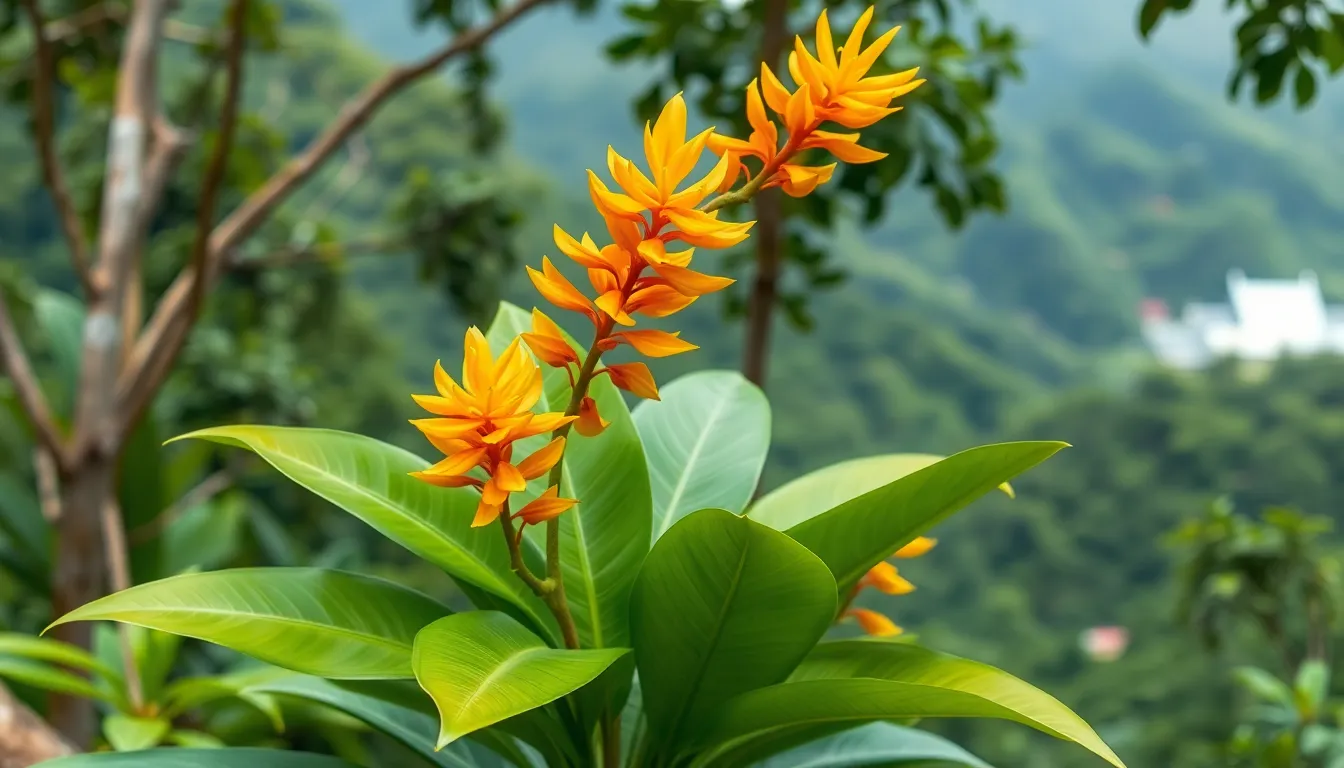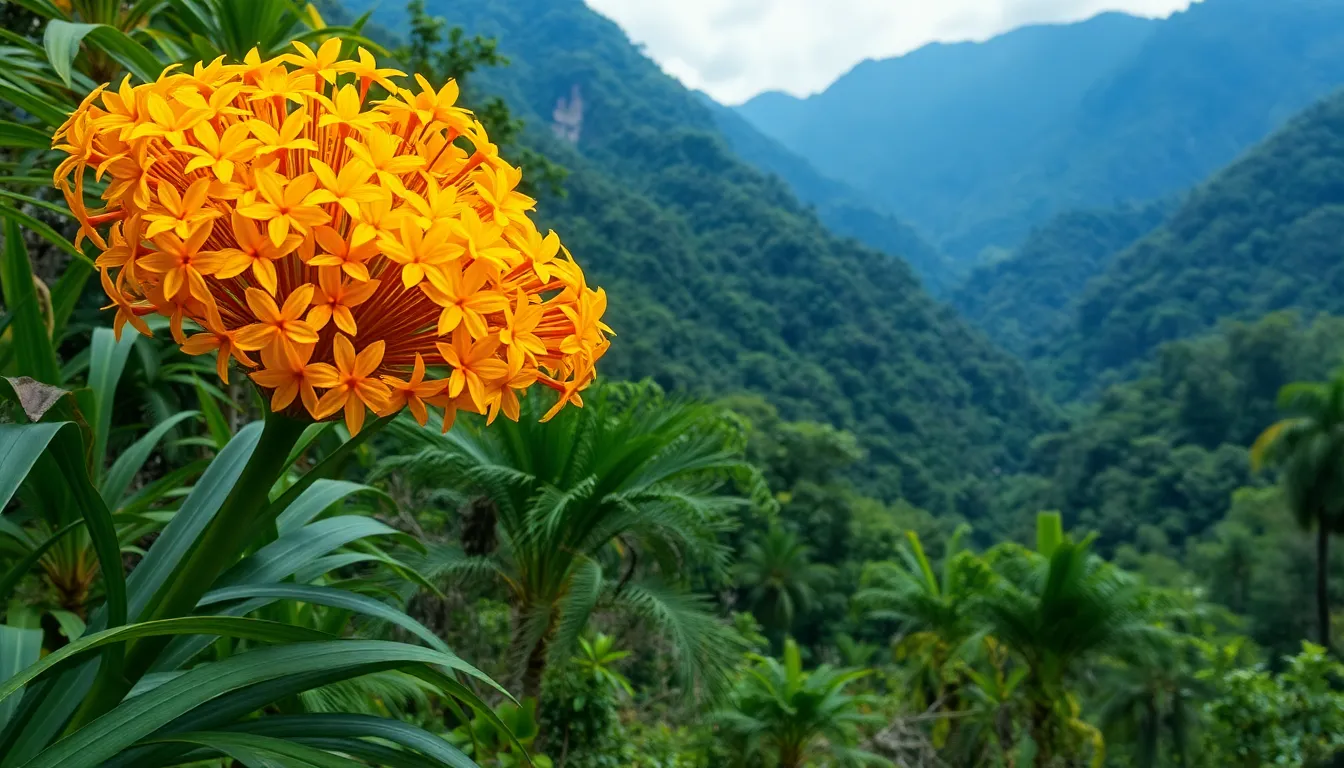Chrysipusya, the enigmatic plant species that’s captivating botanists worldwide, remains one of nature’s most fascinating mysteries. With its vibrant hues and remarkable medicinal properties, this rare botanical wonder has sparked interest among researchers and holistic health enthusiasts alike. Despite its growing popularity, many people still haven’t discovered the incredible benefits this plant offers.
Found primarily in remote subtropical regions, Chrysipusya isn’t just another pretty flower in the garden. It’s revolutionizing how we think about natural remedies and sustainable agriculture. The plant’s unique composition contains compounds that scientists believe could address several modern health challenges, making it a potential game-changer in the wellness industry.
Table of Contents
ToggleWhat Is Chrysipusya: Origin and Definition
Chrysipusya originates from the remote subtropical regions of Southeast Asia, specifically in the mountainous areas of northern Thailand and Myanmar. This rare botanical specimen belongs to the Zingiberaceae family, sharing lineage with ginger and turmeric. The name “Chrysipusya” derives from Greek “chrysos” meaning gold and “pusya” referring to flower in ancient Sanskrit, highlighting its distinctive golden-hued blossoms.
Botanically classified as Chrysipusya aurantiacum, this perennial herb grows to heights of 2-3 feet with slender stems supporting broad, lance-shaped leaves. Its defining feature includes vibrant orange-yellow flowers that bloom during monsoon seasons between June and September. The plant’s root system contains rhizomes rich in bioactive compounds such as chrysipusin and aurantiamide acetate.
First documented in 1879 by British botanist Robert Thompson during expeditions through the Golden Triangle region, Chrysipusya remained relatively unknown to Western science until the late 1990s. Local indigenous communities have utilized this plant for centuries in traditional healing practices, considering it sacred for its medicinal properties and visual appeal.
Modern scientific interest in Chrysipusya intensified after 2008 when researchers from the University of Bangkok isolated several unique alkaloids from its rhizomes. These compounds demonstrated significant anti-inflammatory and antioxidant properties in preliminary studies. The plant thrives in specific ecological conditions including high humidity (70-85%), partial shade, and well-draining, humus-rich soils with pH levels between 5.5-6.5.
Today, Chrysipusya represents both a botanical curiosity and a promising subject for pharmaceutical research. Conservation efforts have increased as wild populations face pressure from habitat loss and over-harvesting, prompting cultivation initiatives in controlled environments to preserve this remarkable species while studying its potential benefits.
The Ecological Importance of Chrysipusya
Chrysipusya plays a vital role in maintaining biodiversity within its native habitats. This unique plant creates complex ecological relationships with various organisms, serving as both a resource and habitat component in delicate subtropical ecosystems.
Natural Habitat and Distribution
Chrysipusya thrives in specific microclimates within the mountainous regions of northern Thailand and Myanmar, typically at elevations between 1,000-2,500 meters. These areas experience high humidity levels and receive 1,500-2,000 mm of annual rainfall, creating perfect conditions for this rare plant. Populations concentrate along forest edges and in partially shaded clearings with well-draining, humus-rich soil containing high organic matter. Recent ecological surveys have documented smaller isolated communities in neighboring regions of Laos and southern China, suggesting a potentially wider historical distribution. Climate change has begun affecting these habitats, with rising temperatures pushing Chrysipusya populations to seek higher elevations over the past decade.
Role in Local Ecosystems
Chrysipusya functions as a keystone species in its native environment, supporting diverse wildlife through multiple ecological interactions. Its vibrant orange-yellow flowers attract at least 12 species of specialized pollinators, including rare stingless bees and hummingbird moths that rely on its nectar during critical breeding periods. The plant’s dense root system prevents soil erosion on steep mountain slopes during monsoon seasons, stabilizing fragile terrain. Several indigenous butterfly species lay eggs exclusively on Chrysipusya leaves, with their caterpillars feeding on this plant and nothing else. Local fungi form mycorrhizal relationships with Chrysipusya roots, creating an underground network that facilitates nutrient exchange between multiple plant species. These ecological contributions make Chrysipusya an environmental indicator—its presence signals a healthy, functioning ecosystem.
Physical Characteristics of Chrysipusya
Chrysipusya presents a striking botanical profile with distinctive morphological features that set it apart from other members of the Zingiberaceae family. Its physical attributes contribute significantly to both its ornamental value and medicinal properties, making it instantly recognizable to trained botanists.
Distinctive Features and Appearance
Chrysipusya stands 2-3 feet tall with a robust central stem surrounded by broad, lance-shaped leaves arranged in a spiral pattern. Each leaf measures 8-12 inches in length with a glossy, deep green surface and pronounced veining that creates a textural contrast. The plant’s most captivating feature is its vibrant orange-yellow inflorescence that emerges from a protective spathe during the monsoon season. These golden blossoms, measuring 3-5 inches in diameter, display a unique spiral arrangement of bracts with small, tubular true flowers nestled within. The root system forms a complex rhizomatous network with a characteristic golden-yellow interior that emits a distinctive spicy aroma when cut or crushed.
Biological Classification
Chrysipusya aurantiacum belongs to the Zingiberaceae family, sharing its lineage with economically important plants like ginger, turmeric, and cardamom. Taxonomically, it’s classified under Kingdom Plantae, Division Magnoliophyta, Class Liliopsida, and Order Zingiberales. Genetic analysis reveals Chrysipusya’s closest relatives include Curcuma and Zingiber genera, though it possesses several unique chromosomal markers that justify its separate genus classification. Scientists have identified three distinct varieties of Chrysipusya, with C. aurantiacum being the most common. The plant exhibits diploid chromosome arrangement (2n=42), which contributes to its stable inheritance patterns and distinctive morphological traits. Recent phylogenetic studies position Chrysipusya as an evolutionary bridge between ancient and modern Zingiberaceae species.
Cultural Significance of Chrysipusya
Chrysipusya has embedded itself deeply within the cultural fabric of communities across Southeast Asia for centuries. Its distinct golden-orange blossoms and therapeutic properties have made it a symbol of prosperity and healing in indigenous traditions, transcending its botanical classification to become a cultural icon.
Historical References and Uses
Ancient manuscripts dating back to the 12th century contain the earliest documented references to Chrysipusya in traditional medicine systems. Indigenous communities in northern Thailand incorporated the plant into coming-of-age ceremonies, where young adults consumed a mild tea brewed from its leaves to symbolize wisdom and vitality. Buddhist temples throughout Myanmar featured Chrysipusya in their sacred gardens, considering the plant’s golden hues a manifestation of divine energy. Local folklore portrayed the plant as a gift from nature spirits, with tales describing how its discovery saved villages during periods of widespread illness. Harvesting rituals followed strict protocols, including gathering only on specific lunar calendar days and offering prayers of gratitude to maintain the plant’s potency and ensure continued abundance.
Modern Applications
Chrysipusya’s cultural impact extends into contemporary society through various artistic expressions and commercial products. Fashion designers incorporate the plant’s distinctive spiral pattern and golden-orange color palette into textile designs, particularly in sustainable clothing lines from Thailand. Film directors from Southeast Asia feature Chrysipusya in scenes symbolizing tradition and natural harmony, reinforcing its cultural significance to global audiences. Annual festivals celebrating the plant’s blooming season attract thousands of tourists to remote northern villages, creating economic opportunities for local communities. Luxury spas throughout Asia offer specialized treatments using Chrysipusya extracts, marketing these services as authentic cultural experiences. The plant’s image appears on regional currency, postage stamps, and government emblems in parts of Myanmar, cementing its status as a national cultural treasure with significant heritage value.
Conservation Status and Threats
Chrysipusya faces significant conservation challenges despite its ecological and cultural importance. Currently listed as “Vulnerable” on the IUCN Red List, this remarkable plant species confronts multiple threats that endanger its wild populations and natural habitats across Southeast Asia.
Current Population Trends
Wild Chrysipusya populations have declined by approximately 30% over the past two decades. Satellite imagery from 2022 indicates that suitable habitat areas have contracted from 12,000 km² to just 8,400 km² since 2000. Monitoring efforts by the Southeast Asian Botanical Conservation Network (SABCN) have documented that mature specimens are increasingly concentrated in fragmented patches rather than continuous distributions. Five key subpopulations now contain 78% of all remaining wild plants, creating genetic isolation concerns. Commercial demand has intensified harvesting pressure, with an estimated 15-20% reduction in plant density across accessible areas. Climate data reveals that shifting rainfall patterns are disrupting the plant’s reproductive cycles, resulting in reduced germination rates of 27% compared to historical averages.
Protection Efforts
Conservation initiatives for Chrysipusya have expanded significantly since 2015. Three dedicated reserves spanning 1,500 hectares now protect critical habitat in northern Thailand and Myanmar, with buffer zones established around core populations. The Chrysipusya Genome Project has successfully preserved genetic material from 37 distinct plant lineages in seed banks across Thailand, Myanmar, and the United Kingdom. Local communities participate in sustainable harvesting programs, implementing a rotating harvest system that allows plots to regenerate for 4-5 years between collections. Educational campaigns reach approximately 12,000 residents annually in regions where the plant grows, fostering awareness about sustainable practices. International partnerships between botanical gardens in Bangkok, London, and Singapore have established ex-situ conservation collections containing 85% of known genetic diversity, creating insurance populations should wild specimens face catastrophic decline.
Conclusion
Chrysipusya stands as a remarkable botanical treasure with far-reaching significance beyond its stunning appearance. This rare plant’s potent medicinal properties hold promising potential for future wellness applications while its ecological functions support delicate subtropical ecosystems.
As scientific interest grows alongside conservation challenges the balance between utilization and protection becomes increasingly critical. The plant’s deep cultural roots in Southeast Asian communities further highlight its multifaceted importance.
Moving forward the preservation of Chrysipusya will require collaborative efforts spanning conservation science traditional knowledge and sustainable practices. This golden-hued botanical gem represents not just a valuable natural resource but a living testament to the intricate connections between nature and human society.






